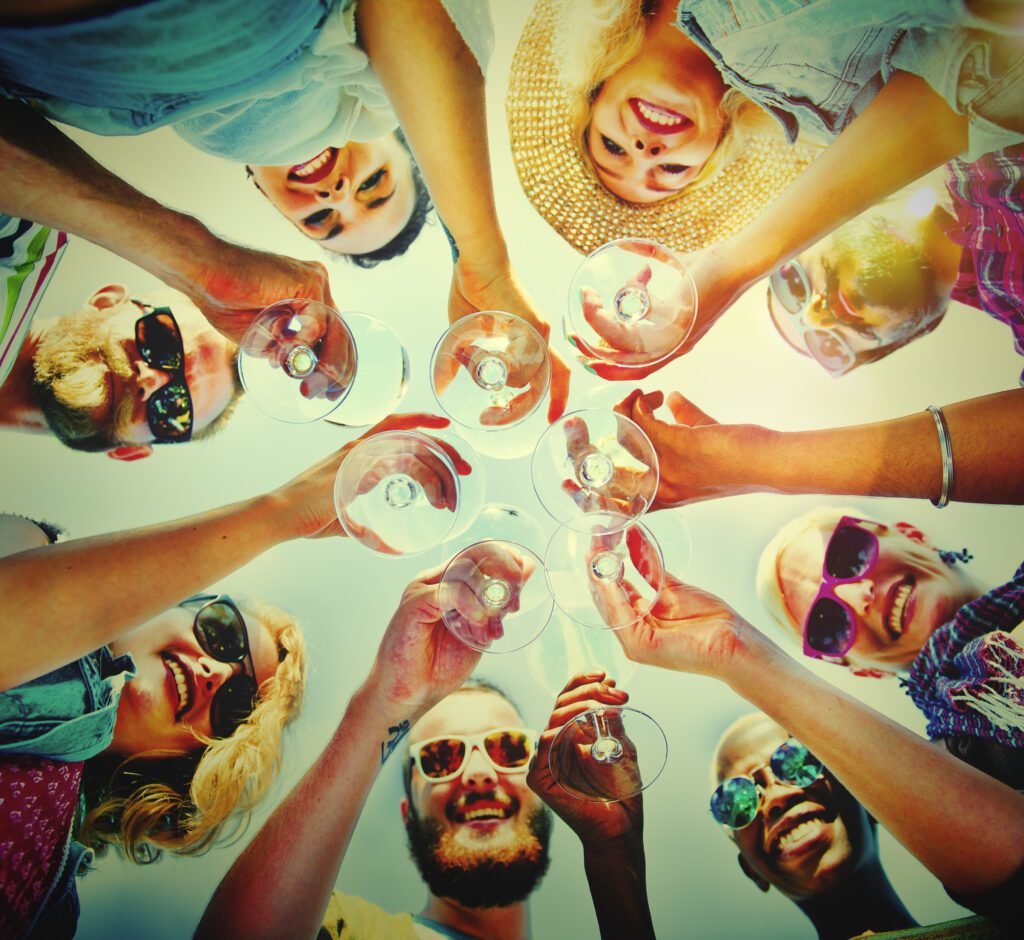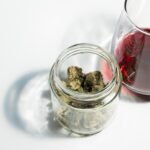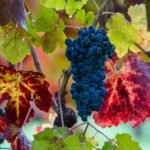Hey there, fellow grape enthusiasts! If you’re like me, you’ve probably spent more than a few evenings swirling a glass of Cabernet, pondering life’s mysteries while your head spins just a tad too much the next morning. But what if I told you that you could keep the swirl, the savor, and the sophistication without the spin? Enter the world of low- and non-alcoholic wines – the clever rebels shaking up the vino scene in 2025. These aren’t your grandma’s grape juice masquerading as wine; they’re legit pours crafted with the same passion as their boozy brethren, minus the buzz. And let’s be real: in a year where everyone’s chasing wellness like it’s the last bottle of vintage Bordeaux, these lighter options are popping corks left and right.
Picture this: You’re at a dinner party, charming the socks off your friends with tales of your latest vineyard escapade (or, you know, that Netflix doc about sommeliers). You reach for a glass that looks, smells, and tastes like a crisp Sauvignon Blanc, but it won’t leave you regretting that third pour. Sound too good to be true? Nah, it’s just science meeting savvy winemaking. In this article, we’ll uncork the hows, whys, and wows of low- and no-alcohol wines, spotlight their killer benefits, and even drop some top picks to get you started. Grab a stemless glass – we’re diving in.
First Things First: What’s the Deal with Low- and No-Alcohol Wines?
Let’s break it down like a bunch of overripe grapes. “Low-alcohol” wines typically clock in under 11% ABV (alcohol by volume), often hovering around 5-10%, while “non-alcoholic” or “dealcoholized” versions dip below 0.5% – sometimes even hitting that magical 0.0%. For context, your average table wine is flexing at 12-15%, so these lighter lads are like the yoga pants of the wine world: comfy, flexible, and way easier on your system.
But here’s the kicker – these aren’t shortcuts. Most start life as full-fledged wines, fermented from real grapes with all the bells and whistles. Then, through some wizardry (more on that below), the alcohol gets the boot. The result? A drink that captures the essence of wine – those fruity notes, that tangy acidity, the subtle tannins – without the ethanol edge. And in 2025, with health trends on steroids, the no- and low-alcohol (NoLo) market is booming. Projections show it’s growing at a zippy 4-15% annually, outpacing traditional wine sales that are, frankly, a bit flat. Younger sippers, wellness warriors, and even preggo pals are driving the demand, proving that you don’t need a high ABV to have high standards.
The Magic Behind the Bottle: How These Wines Are Made
Alright, let’s geek out a bit – but in a fun way, promise. Making low- and no-alcohol wines isn’t about slapping together some grape Kool-Aid; it’s a blend of tradition and tech that would make even the most stoic winemaker crack a smile.
For low-alcohol wines (think 5-11% ABV), it often starts in the vineyard. Winemakers play Mother Nature’s game by picking grapes earlier, when sugars are lower – less sugar means less booze after fermentation. They might trim vines to slow ripening or use “lazy” yeast strains that convert less sugar to alcohol. Regions like Germany’s Mosel nail this naturally with cool-climate grapes like Riesling, hitting that sweet spot of 7-9% ABV without breaking a sweat. Partial fermentation is another trick, like in bubbly Moscato d’Asti, stopping the party early for a lighter fizz.
Now, for non-alcoholic wines (under 0.5% ABV), things get high-tech. These bad boys are fully fermented first – yep, they start as regular wine – then the alcohol is extracted. The top methods?
- Vacuum Distillation: Imagine boiling off the alcohol at spa-like temps (around 30°C) under vacuum pressure, so nothing gets scorched. The alcohol evaporates first (it’s got a lower boiling point than water), leaving flavors intact. Aromas are captured separately and added back – like reassembling a puzzle with all the edge pieces.
- Spinning Cone Column (SCC): This spinning wizardry gently separates alcohol in layers, preserving those delicate volatiles. It’s pricey but produces premium results – think of it as wine’s version of a high-end centrifuge.
- Reverse Osmosis: Wine gets pushed through uber-fine membranes that snag alcohol and water, letting flavors pass. Water’s added back post-filtration for balance. It’s like a molecular sieve, keeping the good stuff in.
And proxy wines? Those are the wild cards – blends of grape juice, herbs, or teas that mimic wine without ever fermenting. They’re 0.0% from the get-go, perfect for purists avoiding even a whisper of alcohol.
The best part? Tech’s evolving so fast that 2025’s NoLo wines are miles ahead of yesteryear’s flat fizz. We’re talking complex profiles from aromatic grapes like Sauvignon Blanc or Chenin Blanc that shine without the alcohol crutch.
Why Bother? The Perks That’ll Make You Pour Another (Guilt-Free)
Okay, here’s where we get to the juicy benefits – and trust me, they’re as refreshing as a chilled Rosé on a summer day. Swapping to low- or no-alcohol wines isn’t just trendy; it’s a smart move for body, mind, and social life.
- Health High-Fives All Around: Ditching the booze means dodging hangovers, dehydration, and that foggy-brain regret. But wait – you still snag wine’s goodies! Polyphenols (those antioxidant superheroes in grapes) stick around, potentially slashing heart disease risk by 14% and stroke by 20%. Lower calories too – a glass of low-alc might save you 50-100 cals compared to full-strength. And for liver lovers? It’s like giving your detox organ a spa day.
- Mindful Sipping, Maximum Fun: In our always-on world, NoLo lets you stay sharp. No more mid-week wine woes – enjoy the ritual without the repercussions. It’s perfect for athletes, drivers, or anyone who’s “sober curious” but still wants that wine vibe. Plus, better sleep? Check. Improved mood? Double check.
- Social Superpower: Weddings, work events, or just Netflix nights – NoLo keeps you in the mix without the mix-ups. It’s inclusive for non-drinkers, pregnant folks, or those in recovery, fostering connections over clinks.
- Eco and Wallet Wins: Many NoLo producers lean sustainable – think lighter bottles and organic grapes. And taxes? Lower ABV often means lower duties, so your wallet breathes easier.
- Flavor Exploration Unlocked: Without alcohol’s heat, subtleties shine – brighter fruits, crisper acids. It’s like turning up the volume on terroir. And in 2025, premiumization is key: super-premium NoLo like French Bloom proves you can sip fancy without the fuzzy.
Sure, they’re “less bad” than boozy versions, but as harm reduction goes, they’re a solid upgrade – not a magic health potion, but way better than soda.
2025 Trends: What’s Bubbling Up in NoLo
This year, NoLo’s not just surviving; it’s thriving. Whites and sparklers lead the charge – think dry Prosecco alternatives and low-ABV reds under 13% that pair with everything from tacos to T-bones. Premium zero-proof is exploding, with businesses stocking up for mindful menus. And sustainability? It’s baked in, from biodynamic grapes to eco-packaging.
Top trends include:
- Premium Sparkling: Bubbly without the buzz, like Edenvale’s award-winning Cuvée.
- Rosé Revolution: Pregnancy-safe pinks from brands like Wines for Mothers.
- Red Renaissance: Lighter Pinots and Lambrusco-inspired low-ABVs.
The UK’s NoLo market could hit £800m by 2028 – that’s no small sip.
Top Picks: Brands to Stock Your Cellar (or Fridge)
Ready to shop? Here’s a witty wishlist of 2025 standouts, tasted and approved by experts:
- Best Non-Alc Red: Ariel Cabernet Sauvignon – Jammy berries with a dry finish, minus the hangover. Or try McGuigan Zero for that oaky spice kick.
- Top White: Dr. Fischer Steinbock Riesling Zero – Zesty and mineral-forward, like a Mosel vacation in a bottle.
- Sparkling Star: Kylie Minogue Sparkling Rosé – Bubbly, berry-licious, and celeb-approved.
- Proxy Powerhouse: Proxies blends – Sommelier-backed alternatives with herbs and teas for a twist.
- Low-ABV Gem: Giesen Sauvignon Blanc – Crisp and herbaceous, under 0.5% but full of flavor.
Other shoutouts: French Bloom for luxury, Sovi Chenin Blanc for everyday elegance, and Missing Thorn for innovative takes.
Pro tip: Chill ’em well, pair with lighter fare (seafood for whites, charcuterie for reds), and sip slowly to savor the nuances.
Wrapping It Up: Raise a Glass to Smarter Sipping
So, there you have it – low- and no-alcohol wines are the witty sidekicks to traditional tipples, offering all the pleasure with none of the pain. Whether you’re cutting back for health, curiosity, or just to keep your edge sharp, these pours prove that great wine is about the experience, not the ethanol. In 2025, as the world gets wiser about wellness, NoLo isn’t a fad; it’s the future – one balanced, flavorful sip at a time.
Cheers to that! (And if you’re signing up for anything, make it a wine club – BinaryGasSearch.com? Sounds like a gas, but I’ll stick to grapes.) If this sparked your interest, hit up your local shop or online for a bottle. Your liver – and your taste buds – will thank you.







Leave a Reply